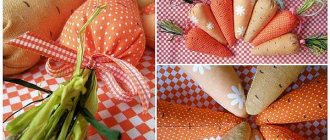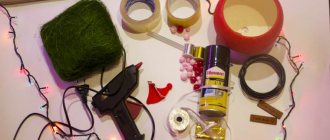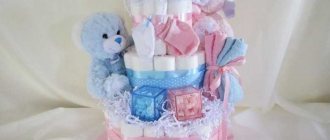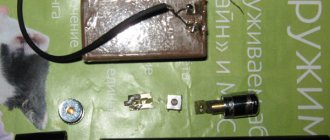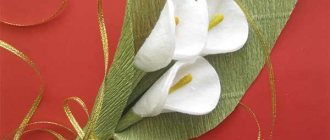What are patchwork pillows?
When you want to decorate a room in a special way, bringing coziness and comfort into it, many people began to use patchwork pillows.
With the help of such design solutions, it is possible to successfully highlight an armchair, bed or sofa cushions. For those who decide to use the second option, it is important that all the necessary materials are at hand. Only by strictly following the special technique, using diagrams and taking into account all the instructions that the master class provides, you will be able not to miss a single detail. Using patchwork patchwork pillows, you can make the overall interior bright and beautiful, adding zest to it with your own hands
Using patchwork patchwork pillows, you can make the overall interior bright and beautiful, adding some zest to it with your own hands.
What are the advantages of patchwork:
Sewing from scraps is used not only for making pillows, it can be blankets, clothes and pillowcases. It is important that this style has become a real find for thrifty housewives. To sew, for example, a pillowcase, old used fabrics were selected, from which flaps of the required size were cut out. And then the desired model was created.. Using this simple method, you can make the overall interior bright and beautiful by adding an interesting detail from multi-colored scraps with your own hands.
Using this simple method, you can make the overall interior bright and beautiful by adding an interesting detail from multi-colored scraps with your own hands.
How to properly patchwork pillows: master class
Any master class on sewing a patchwork pillow with your own hands is designed to comply with several points:
Before starting work, it is important to carefully prepare your workplace and stock up on all the necessary materials.
Patchwork stages:
- If it has been decided to use a master class with embroidery for decoration, floss, scissors, a needle, etc. must be present. The embroidery is applied to the fabric, and then used to create a pillowcase or pillow.
- You need to leave 2-2.5 cm on each side of the design. The next step is to cut out the shreds. You will need strips the width of which is equal to the embroidery and the height of 2.7 cm. Be sure to leave 0.6 cm on each side for the seam. After sewing the flap, you need to iron it well with an iron.
- The next strip should be from a different fabric. It is measured by the overall size of the resulting flap and ironed well. The sizes of the remaining strips are measured in the same way and cut from other types of fabric.
- For such a pillow with embroidery, you will need four types of fabric, which must be alternated with each other until the front side is ready. All that remains is to sew the bottom part to it, fill it with filler and make a hidden seam.
Related article: Redevelopment of a one-room apartment into a two-room apartment
Before starting work, you need to prepare your workplace well and stock up on all the necessary materials and tools.
This master class is just one of many possible options for creating decorative pillows.
Master class on sewing a pillow using patchwork technique (video)
Style Features
Patchwork is a special patchwork technique. This is a direction of modern needlework in which products are created from pieces of fabric of different colors. This type of sewing arose out of necessity. In ancient times, people did not always have the opportunity and means to buy clothes or things, but sewing them themselves from pieces of fabric was a good solution.
The technique is the process of joining pieces of fabric into a single fabric. Despite its popularity throughout the world, patchwork originates specifically in the American interior. There are many types of patchwork, each with its own characteristics.
English technology. The figures are arranged according to patterns of the same sizes and shapes. This type has a clear geometry. Triangles, squares, and rectangles will do. The colors are always subdued. As a rule, 2 colors are used. The finished product is simple, laconic and very modest, which suits the interior of noble people in England.
Peculiarities
Patchwork pillow sewing was invented a long time ago; people resorted to it due to a shortage of material; at that time, any scrap was valuable. And they were sewn together in a chaotic manner, rarely paying attention to the combination and integrity of the composition. Contemporary art involves a skillful combination of different shapes, fabrics, sizes of pieces of material, as well as taking into account the compatibility of colors with each other.
A decorative product can fit into different styles. It is possible to purchase ready-made pillows and blankets. A wide range of textile products using similar techniques are on sale.
Specialized stores also sell ready-made scraps that fit in size and just need to be sewn together correctly. Therefore, if you don’t want to prepare the fabric, you can still create a patchwork pillow with your own hands.
Making seams
Let's take a closer look at connecting the parts together in a single drawing. For convenience, a composition is assembled from large squares. Depending on the chosen pattern, they can consist of only small squares, or of squares and triangles. Each seam must be ironed with a hot iron on both the front and back sides.
When large elements are prepared, they are sewn together in strips. This only applies to square or rectangular pillows. Next, we’ll take a closer look at how to sew a pillow from round scraps with your own hands.
Types of patchwork
Before you start sewing any product, you should familiarize yourself with the patterns and templates. The activity seems easy and simple only at first glance. In fact, it requires special care and scrupulousness.
The execution technique must be carefully and carefully followed, then you will be convinced of the charm of the product itself.
Japanese
This technique combines the traditions of the West and the East. Silk fabrics and stitches are actively used. Various geometric shapes serve as the basis: squares, triangles, rectangles, rhombuses. In addition to making decorative bedspreads, this type is suitable for panels.
The spread of patchwork in Japan was also caused by the economic situation.
Knitted
Most needlewomen are familiar with it. The difference from traditional patchwork is that the patches are not sewn together, but are knitted or crocheted together. In this case, both fabric and knitting threads are used. The most popular accessory of this type is a woman's bag or a large bedspread.
It is almost universal - any product can be knitted using this technique.
Mill
It is considered the most common option. Consists of two pieces of fabric with contrasting colors. Provides the opportunity to create various figures and achieve original combinations.
Usually made from two fabrics in contrasting colors.
Log hut
The formation of patterns is done from stripes around the main element. Most often square. Laying occurs in a spiral. Another variation of this technique is to move the square into a corner.
You can also find another name for it – “Well”. In the English version it is called Log Cabin.
Crazy patchwork
Translated it means “crazy shred.” The main feature is the use of figures of various shapes. It may be irregular, crooked, or have the appearance of a non-standard appliqué. The seams are masked using braid or special embroidery. The product itself is decorated with various decorative details: beads, buttons or metal pendants.
Crazy – translated from English means crazy”, “crazy”.
Variants of popular schemes
The creation of drawings according to different schemes differs slightly, the basis is always geometry - the correct combination of elements. There are two main schemes of work in this technique:
- square method - when the fabric is cut into identical squares of different colors, it is better for beginners to use the “chessboard” technique, alternating contrasting colors in the appropriate order;
- strip method. The panel is created from prepared strips of fabric, which are sewn together according to the chosen pattern.
The stripes can be assembled in different orders:
- parallel to each other;
- spirally, called the “log cabin” method;
- stripes that seem to move towards each other;
- triangles from which squares are created can also be used to assemble a star;
- using hexagons, you can create a honeycomb;
- “watercolor”, here the arrangement of colors plays a role. Move from a light tone to a darker one.
The main points in the patchwork technique (patchwork): useful techniques for using patterns
This type of patchwork is based on somewhat unusual rules. Moreover, this technique contains some more secrets that will help make the little thing truly useful in the household. Read more about them.
Rules for selecting material for the implementation of equipment
Often, patchwork sewing uses fragments in the shape of a rhombus or a triangle. PHOTO: yandex.ru
In order for the product to ultimately gain recognition and become a reason for discussion among your neighbors and friends, it is important to monitor the quality of the material used. It is clear that remnants of various fabrics are used, however, they should not crumble, crumble, be full of holes or dirty
Since all products are made according to the mosaic principle, it is important that the textiles are non-slip, dense, preferably cotton. However, you should not ignore these types of materials: denim, silk, linen or wool
Some even use drape. As for the size of the fabric, you don’t need specific parameters of the fabric, the main thing is that it is enough for the planned number of templates and future patches. You shouldn't get stuck on one type of textile. To make your work look as original as possible, you need to try your luck in combining different textures with each other. The density of the material is determined depending on the purpose for which it will be used. For example, too thick fabrics are not suitable for night curtains, but for DIY patchwork bedspreads, capes and bedding, novice craftsmen should choose thicker textiles.
Popular articles Home decor - ballerina made from a napkin
Remember that the size of all flaps should be the same, and the shape of the pieces that fit together should not be changed.
Product options for purchased items must have the appropriate palette PHOTO: yandex.kz
How to choose templates, make diagrams and cut out patchwork
Many bloggers who willingly share master classes and training videos provide the opportunity to buy or download special templates. The only disadvantage of downloading is that they then need to be printed, cut out and glued onto thick cardboard. However, there is always the opportunity to purchase this material at hardware stores.
Each needlewoman can make this option on her own. To do this you will need fabric, paper or cardboard. It is better to make several templates so that you can immediately apply them to the fabric and cut out the required number of pieces.
All the details in the picture can be marked with numbers, and then the fabric flaps can be numbered. PHOTO: pinterest.ru
If the diagrams are drawn by hand, then the base is pre-selected (you can make a drawing directly on it). If you are afraid of ruining something, it is better to do the rough work on a large piece of whatman paper. The drawing indicates the estimated pattern or ornament, the required number of parts, possible fabrics and colors in case there is a risk of confusing something.
When downloading from the Internet, it is better to choose templates that clearly show every detail in color PHOTO: liveinternet.ru
The templates are cut using scissors along the marked dotted line.
Please note that many patterns do not allow for seam allowance on the flaps. Therefore, the housewife must calculate this moment independently.
To prevent the product from coming apart at the seams over time, the amount of material per stitch should be at least 1-1.5 cm PHOTO: liveinternet.ru
What are the techniques for joining cut flaps into a whole canvas?
Today, two patchwork sewing techniques are used: American and block. The first method involves basting identical shapes to each other using paper templates. Next, a seam allowance is made for the turn-up, and then basted again.
Tactics using blocks takes less sewing time than English PHOTO: hu.pinterest.com
Block tactics are considered modern. It can be used by both experienced craftswomen and beginners. The technology is as follows: pieces of triangular or square shape are connected into blocks. After which it is sewn to the base, creating a specific three-dimensional pattern.
A patchwork style seam can be simple, hidden and decorative PHOTO: pinterest.ru
Sewing a pillow
Let's start the master class for a pillow made of scraps by making a square-shaped bedspread. The fabric should be natural, dense and strong, so stock up on satin or calico. Depending on the shape of the product, the fabric is cut. For a square or rectangular pillow, the fabric can be folded in half to create 3 rather than 4 seams. Sintepon must be purchased either by weight or in sheets.
In the first case, the napkin is first sewn, a small hole is left for the filling, the inside is tightly stuffed with synthetic padding, and the remaining piece is sewn up by hand or with a surface seam on a sewing machine. The synthetic padding sheet is first sewn together in several layers, and then carefully inserted into the finished cover; the last side of the cover is sewn up with an outer seam. The same type of filler is used for round and cylindrical pillows.
How to make it yourself
The first photo shows the creation of a diagram, which we transfer to a sheet of paper of the appropriate size. To do this, you can use a special transparent sheet with printed squares.
Now we cut the fabric into pieces of different sizes. Preferred shapes are square and rectangle.
On each segment you need to process the edges so that they do not unravel. It is better to do this with a sewing machine. Each modern model has a function that allows you to carefully fix the edge of the fabric.
Place the two pieces of paper with right sides facing each other and sew them together.
Everything that sticks out beyond the stencil must be cut off, forming a smooth edge of the future pillowcase.
When all the patches are sewn, we proceed to framing. To do this, bend the edge about a centimeter and secure it with pins. When sewing with a machine, do not forget to pull out the pins. We do the same with all sides of the product.
We place the pillow on our pillowcase closer to one of the sides. Cover with the right edge and then the left. The fabric should overlap slightly. We fix it with pins and pull out the product.
Turn it inside out. You should sew from the wrong side not the place where it is marked with pins, but the top and bottom edges.
That's it, the patchwork pillowcase is ready, all you have to do is put it on.
These are the cute patchwork pillows you can get if you follow the recommendations.
Here's a close-up photo of the product.
DIY patchwork technique
To make crafts, you can watch tips in master classes, this is especially important for beginners. For experienced craftswomen, it is not difficult to make a unique thing, relying on experience and skills. Their pillowcases turn out beautiful and very organic, even without schematic sketches.
Regardless of the chosen manufacturing technique, you will need a diagram for the correct placement of the patches. It is also worth considering in advance the shape of the product, size, edging, if any. Before starting work, you should prepare the following equipment:
- flaps;
- a reliable sewing machine;
- filler;
- threads with a needle;
- sharp scissors;
- iron with steam function;
- additional accessories.
Step-by-step guide suitable for any patchwork technique:
- Determine the type of future product, draw an appropriate diagram. It is worth watching master classes and photographs on the topic. After this, you can begin making templates.
- Fabric preparation – pre-washing, ironing. Light textiles must be weighted with non-woven fabric.
- Transfer the pattern to the fabric and cut it out.
- Fold in pairs, sew, ironing each seam.
Patchwork style is a variety of techniques. Perfect for beginners:
- Classic style - 16 identical squares of 2-5 different colors. The fragments are sewn together in strips of 4 pieces, not forgetting to leave 1 cm for allowances. Then the blanks are sewn together. The back part is made plain, and a zipper can be sewn into one of the sides.
- Square within a square - fragments of different sizes are sewn sequentially, at an angle of 90 degrees. Two different fabrics of contrasting colors are used.
- American square - the central figure is surrounded by triangles in a spiral, differing in size, but with the same width.
- Russian square - a central figure is selected, and stripes or triangular fragments are sewn around it.
You can make a patchwork style pillow with your own hands using the following technique:
- Diamond - a detailed diagram consists of several different-shaped quadrangles and the same pentagons, designed for 6 templates;
- The mill is a successful combination of triangles and square fragments of different sizes;
- A star is a pattern of equilateral triangles.
Cross-stitch
Original pillowcases are made with a central plot. You can find fabric with a print, or you can embroider it. This is especially true for the design of small cross-stitched compositions that are too small for frames. Things with animals look cute in children's rooms. Patchwork cross stitch is suitable for beginners and craftsmen.
Pattern drawing
Patchwork, or patchwork, is always done according to a clear pattern. To compile it, you need to purchase special centimeter paper in a box. The selected drawing is transferred to a sheet in full size. You can draw the diagram yourself, or you can find a drawing on the Internet. Patchwork ideas for pillows depend on their shape. A round product is often divided into sectors. A cylindrical cushion is decorated with stripes, but to make square pillows in this style you will have to work hard, since the pattern can be made up of dozens of small elements.
The sample picture in the article shows that to form the front side of the pillow, you need to sew many squares and triangles together, and so that they are all the same size. In order not to confuse the details, it is advisable to paint the diagram in the colors of the fabric.
How to make patchworking with your own hands
The patchwork technique will not cause any particular difficulties. The main thing is to choose the right material and tools. It is also desirable to have creative skills and imagination. In this case, you can create masterpieces that will inspire admiration among others. Moreover, production will take little time.
Pillows and bedspreads
To create pillows and bedspreads with your own hands in the patchwork style, you will need scraps of any material. Next, they are laid out according to a certain pattern. To ensure that the drawing remains in its original form, it is recommended to number each piece. Two scraps are pinned together with the right side inward and stitched on a machine. This procedure should be done with all the pieces. The squares are connected into strips, and those, in turn, into a canvas.
The triangles are connected into squares and then into the main product.
From jeans
To work with jeans you need to have special skills. After all, this fabric is denser than cotton. At the same time, there is no need for a lining, which greatly facilitates the work. The methods for making things are no different from other options.
When using denim, be sure to use a thimble. Due to its density, it is difficult to pierce. You will also need an elastic needle, longer and thicker.
Old things are used as consumables: skirts, shorts, vests, etc.
Thanks to this method, you can not throw away your favorite clothes, but give them a new life, make something interesting and unusual out of them.
Popular articles Congratulations on Christ's Resurrection
Patchwork
For this type, you should first decide on the material. Collect all the pieces of fabric that are available, sort them by color and structure. Then you can start drawing up the diagram itself. The joining procedure usually consists of several stages: stitching together individual fragments, combining blocks that are already ready, sewing elements to the finished product.
Even if there is a material of a different texture, the product must be assembled from textiles of the same quality.
Blocks for patchwork
A block represents a detail of a future thing. Some of them are very simple, others are more complex. Let's consider both options.
Jacob's Ladder is difficult - choosing fabric in contrasting colors (for example, blue and red). Make four strips of it measuring 35x7 centimeters and four squares - 13.5x13.5 centimeters. All pieces should be of different shades. Place squares right sides together and strips separately. Sew one of the strips along the long side. Lightly press the seams. Connect it to the other right sides, without separating, cut into pieces of about seven centimeters (you should get five pieces). Do not take the pieces apart, sew them together. You will end up with four squares. Cut large squares at the corners and draw a line diagonally. Make a line at a distance of five centimeters from the line on each side, cut diagonally, but not along the lines. Iron, cut off the resulting corners, do the layout, sew everything.
Templates for patchwork patterns are sold in special stores; you can make it yourself according to the pattern.
An ordinary square is considered simple. To do this, take a flap (you can from a kit or cut it yourself). On the inside, mark a seam allowance of approximately one centimeter. Fold the product in half with the front side inward. From the inside out, sew the two sides along the marks, you should get an envelope. Next, you should turn it out and flatten it to form a rhombus. Now take the filler, cut a square in it to the size of the envelope, leave one centimeter for allowances. Insert the filler into the product, straighten out any irregularities. The open edges of the diamond should be folded inward and pinned together so that they do not stick out in all directions. Begin stitching the folded corners, removing pins as you go.
Each item made in this style is unique, even changing the shade of one of the details transforms it in a new way.
How to get started
You should start with preparing materials and tools. To obtain a decorative pillow fabric, scraps of different colors, remaining after any sewing, are initially selected. You also need to think about what the pillow will be filled with - most often the filling function is performed by padding polyester.
Handicraft tools you will need:
- objects for cutting (scissors, ruler, chalk);
- thread and needle;
- iron for smoothing and steaming;
- sewing machine.
Master class on sewing pillowcases
- Cut a piece of material to the size of the future pillowcase, for example 50x45. This will be the basis.
- Place the first piece of any shape and size on it.
- Place another free-form scrap on top of it, face to face. Where you will machine stitch, pin together. Do not pierce the pins along the seam, but across it.
- Sew on a machine. The machine needle will slip through the needles, that is, they will not interfere with the stitching. Remove the pins and trim off the excess.
- Bend the sewn flap to cover the seam and iron it from the front side.
- Next, sew on another patch. Can be positioned counterclockwise. The principle is the same: apply the front side, pin, sew, remove the needles, bend, cut off the excess, iron.
In this way, you can sew on the patches until the entire base fabric is covered. Smooth it with an iron and trim off any excess. Until the entire pillowcase is sewn, decorate the fabric.
Decorating the first sheet of pillowcase
In the Year of the Mouse, you must make an applique of the mistress of the year. The mouse can be cut out of felt, thick fabric, or raincoat fabric. You can sew over the edge. Then, from the same material, you should cut out the numbers that make up the next year - 2022 and also sew them on.
Anyone who can embroider, embroider, or make applique - everything will be appropriate and beautiful.
After this, you need to sew braid, ribbons, and lace along all the seams. You can decorate with buttons, beads, flowers that you make yourself.
How to make a second piece of product
Then we proceed to making the reverse fabric of the pillowcase:
- Take a piece of fabric the same size as the first side of the product. Let it be red satin.
- Place thin padding polyester on the wrong side of the satin.
- To prevent it from coming apart, cover it with another piece of fabric and quilt it with squares or diamonds.
- Fold both sides right side together, basting so they don't move.
- Next, make a “frame” of fabric like an inlay:
Sew a ribbon of any fabric, 5-6 cm wide, around the entire perimeter. Sew face to face, grabbing both sheets of the pillowcase.
- Fold the product onto the satin side, fold it over, and stitch, leaving room for stuffing with synthetic down.
- Rip out the old pillow. Select synthetic fluff and stuff a new pillowcase through the hole left.
- Sew up the hole.
Tips for novice dressmakers
At first glance, there is no scheme, but you still need to take into account some rules:
- Each time the edges must be aligned.
- Trim the excess fabric with scissors so that the next piece can be sewn to the even edge of the fabric.
- You should not sew fabrics of the same color next to each other; it is better to alternate them in any order.
- The product looks very nice in black and white.
Crazy patchwork style - sewing without rules
It is customary to give gifts on New Year's Day. How can you surprise your family, girlfriend, mother? You can buy something in a store, but it's no longer a surprise. Try making a patchwork pillowcase with your own hands, decorating it with a New Year's theme.
Collect different scraps, select old men's shirts, pieces of braid, buttons, beads and get to work.
The patchwork technique we are accustomed to involves the selection of material, the production of templates, and a clear sequence of production of products. And the crazy style is attractive because it does not recognize any rules.
Crazy is the most successful technique for beginning craftswomen. There is no need to make templates or follow a specific order of parts. You can arrange the scraps as your imagination dictates.
You can master the crazy patchwork technique in a very short time. Get your scissors, iron, safety pins and plenty of scraps ready.
Popular categories
Crochet toys
Crocheted toys have recently gained great popularity among needlewomen around the world. And it's deserved! Is it possible to remain indifferent to miniature amigurumi or furry animals knitted from pile yarn? If you consider yourself a fan of knitted toys, then perhaps the following master classes will be of interest to you.
- Crocheted mouse Vasilisa. Master class on knitting toys.
- Little Fox Lucas. We crochet a toy.
- Crochet Fox Zlata. Description of knitting toys.
DIY bears
Toy bear cubs are creatures that are always out of competition among other toys. Remember the famous Teddy bears, or the so-called attic bears, made in vintage style
Do you want to make a bear with your own hands? Pay attention to master classes on creating bear cubs
- Crochet Makar bear. Description of knitting toys.
- Master class on dry felting the “Emily Panda” toy.
- Little bear Ostap. Master class on crocheting toys.
Translations of foreign master classes
Despite the fact that many people are now fluent in foreign languages (for example, English), some still need help translating knitting descriptions. Translations of foreign master classes on handicrafts can be found on our website.
- Crochet rattle. Bear Bram.
- Crochet bunny. Master class from Kristi Tullus.
- Harry the Giraffe by Amanda Berry. We knit a toy with knitting needles (translation).
What materials can be used for patchwork pillows
You can put together a patchwork collection of sofa cushions to create a complete living room interior. Covers in this style can decorate chairs; the use of equipment is not limited. Some housewives love the resulting style so much that they create an imitation of knitted fabrics by crocheting them; knitted items are coming back into fashion.
However, classically this technique is performed from fabrics. Most often, cotton material is chosen for this purpose (chintz, twill, poplin, satin). The density of the weave may also vary, but it is preferable to focus on opaque types of materials.
If you decide to make a voluminous or textured pillow, then it is better to choose fabrics with mixed fibers, or a synthetic type of material (polyester, acrylic). Some people stick to very thick fabrics such as denim and leather.
Note! But you need to take into account that they are more difficult to work with, so the drawing will need to be made simpler, usually in squares.
Patchwork sewing step by step for beginners
Not many people know how to make things using patchwork. For beginners, the technique, step-by-step photos, and diagrams proposed in this article will become indispensable assistants in a new business.
Blanket
Before actual work, you should decide on a pattern, choose a fabric (the best solution is one fabric of different colors, as well as a single-color fabric for the back side) and filler (usually padding polyester is used), make templates from cardboard or any other dense material (here we consider making a blanket from squares).
Step-by-step instruction:
- First of all, using templates, you need to cut out the required number of square elements. Their number and size depend on the personal desires and preferences of the needlewoman.
- Then, placing the scraps next to each other, you need to sew them together along the marking line from the wrong side. Having combined all the elements with each other, thereby creating the front side of the blanket, they should be carefully smoothed with an iron.
- The plain fabric for the backing should be laid out on a straight surface and the filling should be placed on top. The padding polyester needs to be cut out with a margin on each side. To prevent the filling from pilling in the corners, it must be quilted (from the center to the edges).
- The last step is to sew all three layers together. If the layers slip when stitching, they can be pinned down with pins or needles. To prevent the blanket from starting to fray at the edges over time, they can be stitched with braid.
Popular articles Lilac flower
Rug
To make a rug, you can use small trimmings of an unlimited number of colors. However, you definitely need to purchase a single-color fabric (2.5 times larger than the size of the planned carpet), transparent fabric and filling. A single-color fabric should be laid out on a straight surface, and the filler should be placed on top so that it takes up only half of the fabric.
The second half needs to be covered with the filling on top, sewn and topstitched. Next, on the resulting “pad” you need to randomly (but artistically) distribute scraps of different shapes, colors and sizes, which are then covered with a transparent piece of fabric. Now the rug needs to be stitched over the entire area so that it does not fall apart.
Tack
It is best to use denim to make potholders, as it is quite dense and takes a long time to heat up. It can be performed using any of the techniques described above, but the most popular is the “Well” technique. To do this, you need to cut 10 strips of different lengths from denim fabric of different colors. Then all the elements must be combined according to the appropriate scheme.
Patchwork for beginners is used for sewing oven mitts, blankets, pillowcases, etc. Step-by-step technique, photos, diagrams can be found on the website.
The final touch is the framing of the potholder: you can sew any tape along the edges, which needs to be turned into a loop at the edge. This version of the technique is intended for beginners, but after getting the hang of it and studying many step-by-step photos, instructions and diagrams, each needlewoman will be able to perform more complex work using patchwork.
Patchwork entered the life of the Russian people a very long time ago, but in recent years it has not only not lost its luster, but is also becoming increasingly popular. Moreover, today this method of sewing is used not only by needlewomen for home design, but also by fashion couturiers for branded clothing.
Round pillow
The base for a round pillow is made up of several circles of sheet padding polyester sewn together with threads. The napkin is sewn from thick fabric from two circles and a long thin side strip. Work on the decorative cover is made from individual scraps in sectors. To do this, use a cardboard template and several harmoniously matching colors of cotton fabric. The sectors are cut out in such a way that there is fabric left on each side for hems and seams.
Using a template, iron all the seams to create straight lines for joining the pieces together. To hide the center point of the pillow, prepare two large buttons with a loop at the back, wrap them in any fabric and sew all layers of fabric and padding together, as in the photo in the article.
The side and back sides of the cover are sewn in the same colors as the central part of the craft. They can be colored or plain, at the choice of the master.
Pillowcase with rose
An original gift with a voluminous rose in the center will delight any woman. A pillowcase with a flower for the New Year will delight your mother or friend.
Master Class:
- Cut the base of the pillow from any material.
- Cut the pieces into square shapes, with a side of 21 cm. Fold them in half twice. For volume, you can combine them with non-woven fabric.
- Sew the first piece of fabric into the center of the flower. It is better if it has the shape of an irregular hexagon. It will be easier to turn the fabric.
- Sew the next piece of fabric, but of a different color, to one of the edges of the polyhedron face to face.
- Make a small increase on the seam, sew, bend, iron. Just like in the crazy technique.
- Sew another piece to the next edge of the polyhedron and to the side of the already sewn piece.
- Moving from side to side of the polygon, selecting shades, fill the entire base.
Then sew the other side of the product, fill it with any filling and give it as a gift.
The charming Christmas tree is quick to make and looks very beautiful.
Different patchwork techniques
Magic stripes
Cut strips of the same width, fold them into a pattern, sew, and iron.
Lay the workpieces in a zigzag, diagonally, vertically, horizontally. Make a New Year's applique.
Triangles
Colored triangles will also make a wonderful picture. You can sew beads, buttons, and fragments of lace into the center of the triangles.
Christmas tree made of triangles. The simplest picture for beginner dressmakers.
Or so.
American square
Pillow made using the American square technique. At first glance, the mill blades are spinning. And these are triangles sewn in a certain sequence. You can sew mice or Christmas trees on light triangles.
Overview of flap suturing techniques
There are several techniques for stitching flaps - simple and complex. For beginners, it is better to use the simplest method - squares, which are cut according to the finished pattern. This technique of stitching flaps is simple and can be done by even the most inexperienced novice needlewomen. The product can be made not only from squares, but also from circles, rectangles, triangles and other geometric shapes. Just squares are the easiest option for sewing patchwork. Let's look at the most popular techniques for joining pieces of fabric.
"Well"
This option for sewing together pieces of material is quite simple: the pieces connected in a special way create the illusion of the depth of the well. A fairly creative and original technique, dating back several centuries, it was most popular in Europe and America. The technique is based on a square, which consists of individual strips of different fabrics. There are several options for connecting strips (they are also called “logs”).
The most popular and easiest way:
- multi-colored stripes in a spiral, light and dark, are stitched to the central square (it is the center of the composition and the color accent);
- the first two strips are sewn to opposite sides of the square, each subsequent strip is stitched in such a way as to capture the previous element.
The movement goes clockwise. When the main tier of the well is ready, the technique is repeated, the tiers are built up in a similar sequence. The result is something like a fashionable 3D drawing, voluminous and deep.
"Watercolor"
The watercolor technique allows you to create a product with different shades and tints. Individual parts must be connected in series to create a color composition. Each element is a tone lighter or darker than the main color; darker tones are stitched together first, then lighter ones are added.
Using this technique to make a blanket out of jeans is quite difficult, but possible. The color palette of denim is limited to a few shades, so selecting scraps and building a color sequence will take more time.
"Quick squares"
The simplest and most affordable patchwork option for beginner needlewomen. This technique allows you to sew a blanket in a few hours. To do this, you need to cut 3-4 rectangular strips of fabric of different colors and stitch them along the long side. The result is a single piece of canvas, from which square blocks of the required size are cut out, then the blocks are connected to each other.
Crazy patchwork
This technique is for advanced and experienced needlewomen. Products made using this technique are real works of art. Crazy patchwork allows the combination of various fabrics of any geometric shape and color in any order, from sewn pieces of fabric or figuratively trimmed edges. All seams are decorated with embroidered flat or raised seams, braid, lace ribbons, beautiful buttons, beads, glass beads, and chains.
The craftswoman must carefully sew all sides of the patchwork elements together; even the smallest scraps of fabric can be used. The idea of the technique is to randomly connect various pieces of fabric and then decorate them.
By stripes
Sewing a beautiful, eye-catching product using this technique is not at all difficult. The technique is based on sequential stitching of strips of fabric of different colors of the same length and width in different combinations. The strips are carefully cut from worn denim and connected according to the chosen pattern and color palette. This technique allows each needlewoman to show her fantasy and creative inclinations. To make stitching easier, you need to develop a plan in advance for connecting the pieces and their colors.
Patchwork design solution: pillow ideas
A patchwork pillow is a thought. To create this style, ideas using bright and eye-catching colors are suitable. Thanks to its fashionable sewing technique, this type of patchwork will be an excellent decoration for the room.
Types of pillows:
- Classic pillow. Ideas for lovers of this style can be varied and in demand. Standing out for its traditional style, this type easily fits into any interior. The main condition for such a design solution is a successful combination of the patchwork pillow with the tone of the furniture. Moreover, classic ideas can combine the use of contrasting fabrics or remnants of curtain fabrics. To create such a pillow, preference is given to rectangular stripes and square patches.
- Knitted pillow. Using such ideas for patchwork, you can not only successfully highlight a recreation area, but also improve the interior of the room. For example, comfort and a cozy atmosphere can be achieved with the help of a round tube pillow. Foam rubber, hooks and yarn are prepared in advance. The main thing is to knit the selected openwork pattern, the edges of which should be enclosed in a small square frame at the end. All that remains is to sew the opposite sides of the embroidery and you get a pipe. Using circular knitting, you can make the sides of the pillow. And foam rubber is used to stuff it.
- Denim pillow. Using patchwork sewing for such a patchwork idea, you can create an original design solution. Moreover, there will be no problem with selecting fabric, because thanks to this technique, old jeans will find their new use. There is nothing complicated about the denim patchwork technique. It completely replicates the classic style.
- Crazy patchwork. This is the most striking style of decorative sewing. A master class of this type is presented using many bright patches of different colors and sizes, as well as laces and braid (they will help hide and decorate the seams).
Related article: How to replace a siphon in the kitchen?
To sew a patchwork pillow, it is better to use fabric of bright colors.
Unlike the classics, there are no alternately connected strips of fabric. The remaining pieces of fabric must be sewn one by one to the central uneven patch, aligning the edges if necessary.
Assembling the patchwork fabric.
We lay out the cut out triangles according to the diagram, simply skip the rectangles (we haven’t cut them out yet). We take a pair of triangles that make up one square, fold them with their right sides facing each other and sew them diagonally.
We stack the stitched squares on top of each other in the same sequence.
Press the seam onto the dark fabric side.
Cut off the triangles.
After all the squares are sewn from triangles and ironed, you can start cutting out whole squares. To do this, measure the side of the resulting square. For me it turned out to be 8 cm. We cut out 16 whole squares from fabric: from fabric A - 8 squares, from fabric C - 2 squares, from fabric D - 6.
We sew a fabric from squares. One of the ways to assemble a canvas from squares is discussed in the master class: Warmer for a teapot using the Patchwork technique.
The wrong side after steaming with an iron looks like this:
New Year Gift Ideas
Decorative pillows can be made in patchwork style. To get neat drawings, you need to make templates. The simplest patterns are squares. Make a square out of cardboard. Applying it to the material, cut out as many squares as needed for the product. Don't forget to allow seam allowances.
The easiest way is to make blocks of 4 squares, then sew them together. At the end of the work, the seams can be decorated with braid, buttons, decorative seams, for example, “goat”.
The squares can be placed in any order, achieving a beautiful pattern.
A square within a square looks beautiful. The technique is not complicated, even beginners can do it. To make sewing even more fun, make patterns for more advanced techniques.
